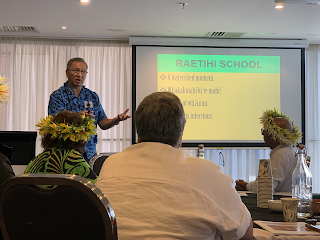The Curriculum Voices Group is a diverse group of people from across Aotearoa to draw on a range of voices and perspectives. The role of the group is to provide guidance and feedback on design, development and implementation of the refreshed curriculum. Key words delivered at Hui #2 were - Bicultural/Inclusive, Clear and Easy to Use.
Implementation of the curriculum is taking place over a 5 year period, all eight areas are to be delivered across that time starting with the new Aotearoa Histories Curriculum and Social Sciences. There will be a refreshed vision, and key competencies, Mātauranga Māori, literacy and numeracy will be woven throughout. Curriculum levels will be replaced by phases in a progression framework. Achievement objectives will be replaced by progress statements. There are number of groups involved in the curriculum refresh process. There are the writers, the working group, the review & testers, the focus groups. All of these groups feedback, ideas and suggestions are shared and discussed with the voices group. Sessions during Hui #2 included the direction of the refresh, the draft bicultural and inclusive framework components, draft social sciences feedback, preparing for the change, feedback from the office of the children's commissioner, literacy and Math strategies and comms and engagement.Being part of the Curriculum voices group has given me and our school the opportunity to add clarity to what's ahead. In sharing my learning with staff I likened it to having a seat at the table as opposed to being on the menu. We have an opportunity to be part of this curriculum refresh, being done 'with' instead of done 'to', which is often how educators feel when new key documents are released to schools.










